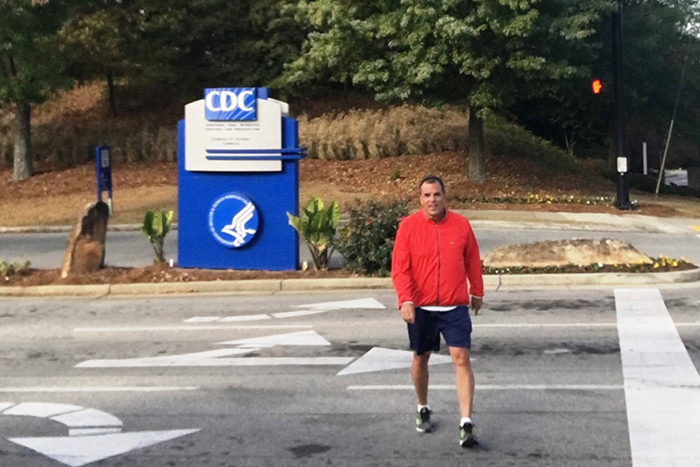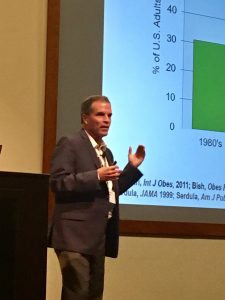In early-November 2016, my travels took me to Atlanta to speak at a meeting called “Preventing Obesity in People and their Pets”. This meeting was held at the Emory University Conference Center and sponsored by the Center for Disease Control and Prevention (CDC). It was organized by the World Small Animal Veterinary Association (WSAVA) and the meeting brought together human medical and veterinary experts to address the impact of obesity on various clinical diseases. It was fascinating for me to find out that the biggest concern veterinarians have for pet health around the world is the same as physicians have for human health – both our pets and their owners eat too much and exercise too little.
The WSAVA group is promoting a powerful solution they call “One Health”, a concept proposing that veterinarians, physicians, and other health care providers work together with medical scientists and social scientists to tackle shared human and animal disease problems in the context of the common environment in which we live. It is recognized that underlying human obesity are complex medical, psychological, and socioeconomic factors, and that these factors may impact the relationships that people with obesity have with their companion animals. Solutions to the global problem of obesity should lie in a “One Health” approach and in developing healthier lifestyles for the human and animal members of the family, with a goal to shape a world where regular physical activity, a balanced diet and healthy weight are part of every family’s life.
I believe this is a brilliant idea that could be a rallying point to improve health in all communities around the world. At this meeting, I spoke about how I deal with obese patients in the exam room. I was joined in this session by Dr. Joe Bartges, a well-known small animal veterinarian at the University of Georgia, who talked about how he deals with obese pets and their owners. It was fascinating to see the similarities in how we both approach this difficult issue. He pointed out how chronic diseases that are associated with being sedentary are just as rampant in dogs (and other household pets) as they are in their human owners. And we both agreed that the most simple and effective thing we can do is to convince people and their pets to go out for a walk every day. It really is that simple and this is likely why it has been observed that people who own dogs tend to live longer than those who don’t. Of course, a dog makes the perfect walking companion and knowing that walking does as much for your dog’s health as your own should motivate all dog owners to get out and walk with their pet every day.
Of course, while in Atlanta I made sure to get out and walk every day. I really enjoyed going for walks around the CDC and Emory University Campus, which were just across the street from the conference center. I also enjoyed walking in beautiful Lullwater Park, which was just up the street from the conference center and offers great walking trails thru a beautiful preserve with many lakes and streams.
I hope this blog finds you walking your dog every day so that both you and your pet can gain the numerous health benefits that this activity brings.
Keep walking my friends!
Bob














